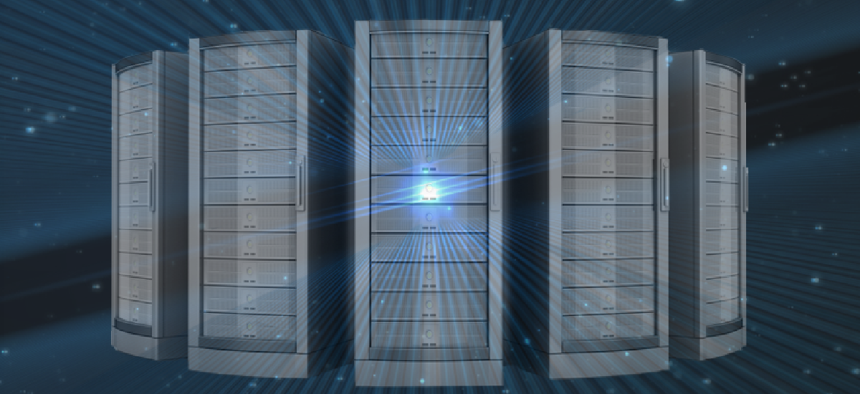Next-generation data centers

As agencies modernize and move to the cloud, CIOs should take stock of roadblocks created by their current data storage solutions and consider what can be improved to better serve their mission.
The norms around data access have shifted dramatically over the past few decades. Where accessing data in under a minute would have been acceptable in the late ‘90s, the new standard is measured in seconds or less. Even as the amount of data agencies collect continues to grow, employees and citizens alike expect increased accessibility, speed and transparency.
But data access will only ever be as good as data storage. To keep up with increased demand for easily accessible information in the 21st century, we must transform the way data is handled across the board. The state of data storage differs from agency to agency, but the path leading to next-generation data centers looks similar for everyone.
Diagnosing the problem
No common diagnosis exists for an outdated data center, but the symptoms are clear. Often, data is not organized and may be stored multiple ways, including in paper files and on tape, that are expensive to maintain. Accessing the data may be inefficient and time intensive, and security tends to be lacking.
Even agencies that think their solutions are adequate for the task at hand may notice a problem as they begin transitioning to the cloud. Cloud environments rely heavily on the storage solutions already in place, and any flaws in an agency’s system will be magnified as it attempts to move forward. In short, not having an intentional and efficient data storage solution will hinder any attempts to upgrade other components of an agency’s IT. This is why working toward next-generation data centers is a crucial step in any modernization roadmap.
Creating efficiencies
When we talk about next-generation data centers, we are really talking about optimization and consolidation. The ideal storage solution is seamlessly intertwined with the rest of the IT infrastructure in the same rack as compute resources, network hardware and other critical pieces of the puzzle.
An immediate benefit of this arrangement is speed. By utilizing a converged or hyper-converged infrastructure, data can be passed more efficiently, often at backplane speed, which can lower latency and improve efficiency. By consolidating resources in this way, agencies also reduce the number of points needed to encrypt and decrypt data, skimming additional time off data retrieval tasks.
Increasing security
By decreasing the distance data travels, agencies decrease areas of vulnerability as well. When data travels between environments, it is open to attack, providing alternative points of access for malicious actors. Consolidating and optimizing data brings all these digital assets together under a single roof, which simplifies and intensifies security efforts.
Data security remains a top concern for citizens and officials alike. If increased efficiency offers insufficient motivation for executives to invest in more advanced data centers, the ease with which consolidation increases data security while simultaneously achieving other goals should win over even the most skeptical decision-maker. With the amount of data being collected, keeping a tight watch on all of it is an imperative, not a luxury.
Saving capital
One often-overlooked benefit of updating data centers is the capital savings involved. Older data centers use much more square footage to perform what can be done in a fraction of the space with modern hardware. While there will be an upfront cost associated with investing in state-of-the-art storage equipment, the investment quickly pays for itself.
In addition, reducing the energy required to run sprawling data centers can save hundreds of thousands of dollars while reducing an agency’s carbon footprint. The resources needed to secure and protect the data scale down as well. Agencies can reap a huge benefit by repurposing those savings into initiatives or products with a greater return, such as more staff, new software or attacking the backlog of projects.
Next steps for better data centers
While the functionality of data centers varies from agency to agency, almost all organizations can benefit from making a few fundamental improvements to the way they store and access information. As talks of modernization and moving to the cloud continue, CIOs should take stock of roadblocks created by their current data storage solutions and consider what can improved to better serve the mission. Since budgets are finite, investments must be made with an eye on impact, identifying what has the power to make the biggest change at the lowest cost. To that end, next-generation data centers have the potential to go a long way toward increasing agencies’ capacity for citizen service.
NEXT STORY: House renews call for multicloud JEDI





